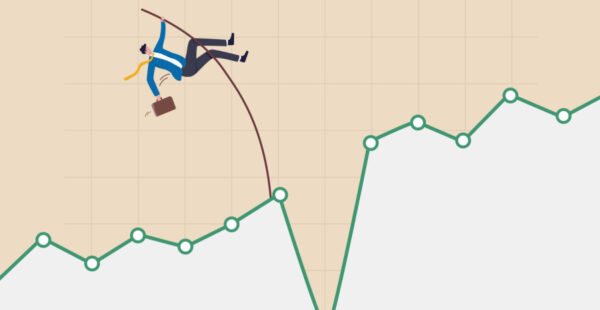2025 touted ‘the year of Australian small caps’: Maple-Brown Abbott

Despite marking a “mediocre” calendar year of performance in 2024, Australian small caps are expected to bounce back as key strategies and themes set the stage for the year ahead, according to a specialist investment manager.
Phillip Hudak, co-Portfolio Manager in Maple-Brown Abbott’s Australian Small Companies division, said the 2024 calendar year was the third consecutive period where Australian small caps had been eclipsed by large caps, whose performance was largely driven by the banking sector and high growth industrial stocks.
As of 20 December 2024, the S&P/ASX 100 Index stood at 10.3 per cent returns, supported by a select number of high-quality companies that were “able to grow earnings faster than underlying growth” due to increased “product innovation, market penetration and/or offshore expansion”.
“In addition, the market has been supported by the small gold miners which now represent approximately 12% of the index weight (based on market capitalisation). Gold has been one of the best performing asset classes over the 2024 calendar year with the small gold mining sector being positively leveraged,” Hudak said.
“The key stock beneficiaries include those producers (e.g. Genesis Minerals and Perseus Mining) delivering/exceeding on production growth and meeting/beating cost guidance as labour pressure and cost inputs eased. Given strong free cashflow generation, we have seen increasing cash reserves drive industry corporate activity, notably for developers which have lagged the underlying gold price (e.g. De Grey Mining).
“Other notable positive performance thematics included:
- the rise of Artificial Intelligence and exponential computational data consumption (e.g. data centres via Infratil);
- M&A activity (e.g. Chemist Warehouse’s back-door listing via Sigma Healthcare);
- index inclusions (e.g. Life360’s inclusion in the Russell 2000 Index);
- government support via cost-of-living measures for the aged care and childcare sectors (e.g. Regis Healthcare and G8 Education); and
- continued founder-led business outperformance (e.g. Netwealth) despite governance and board oversight concerns for select companies.”
Looking ahead to 2025, Hudak said “a supportive global stimulatory backdrop and expectations of falling domestic interest rates” were two key factors that would contribute to strong Australian small cap performance, with the Reserve Bank of Australia projected to commence easing of monetary policy early this year and to have reduced rates by 0.75 per cent by year-end.
“2025 is expected to be another interesting year for Australian small cap investors with the following key themes investors should be looking out for:
- Stock performance broadening: Given a more favourable domestic macroeconomic backdrop, we expect a better earnings outlook at the smaller end of the market (relative to large caps) over the next couple of years, resulting in a broadening out of stock performance across the index. We continue to see structural growth and Information Technology exposed companies delivering on earnings although many now are being priced for perfection. We no longer expect a ‘earnings scarcity’ premium going forward (unlike what we experienced over the 2023 and 2024 financial years) as investors may look to recycle capital into under-appreciated Australian small cap companies with more attractive valuation metrics and strong earnings outlook that are less crowded, including Perenti (PRN) and Service Stream (SSM).
- Onshoring/defence exposures: A key trend post-COVID has been companies seeking greater supply chain security via on/near-shoring. In addition, we are seeing heightened geopolitical tension and de-globalisation with increasing global defence spending being a structural growth thematic which we expect to escalate under the next Trump presidency. Both Codan Limited (CDA) and Austal (ASB) are positively exposed to this theme via expansion of communication services for military and US shipbuilding, respectively.
- Election uncertainty: The 2025 calendar year is expected to be particularly interesting given the upcoming Federal election, which must be held by May 2025. We expect cost-of-living measures and fiscal spending to continue which should be supportive for our holdings in the aged care and childcare sectors. However, investor attention is now focusing on the potential for a minority government and/or change in government (Coalition currently drawing ahead now) outcome which will provide a level of uncertainty equity markets for the first half of the year.
- Rising industrial action driving stickier wage inflation?: A key surprise from 2024 has been the strength in the labour force despite forward indicators having softened. Whilst the major driver has been public sector linked jobs growth, there are risks to the wage inflation environment being stickier given the following: (1) cost-of-living pressures have eroded real wages with the Fair Work Decision looking again set to increase minimum wages by in excess of 3.5%; (2) new union delegate rights and enforced negotiations are driving a wave of employee strikes across select industries; and (3) recent trends in EBA outcomes look to have re-accelerated. We continue to focus on companies with pricing power that can pass through potential cost increases or have cost levers to pull to protect margins.
- Corporate activity: Given the lower Australian dollar, improving earnings outlook and attractive valuations on offer, we expect increased M&A interest from offshore players for growing domestic small and nimble businesses.”











The PHD in economics is the scariest. How many academics actually understand the real world
Money is leaving at a slower rate with this being considered by AMP management as a positive. Australia's Money Pit…
"Our recently launched digital advice solution for AMP Super members is providing simple, intuitive retirement advice at no extra cost.”…
Assistant to Bill Shorten...FoFA, A time when dozens of submissions were made, 90 odd submissions ranging from clients be sent…
Only way to get that 1.25 times back will be to move clients from Brighter Super into their SMA on…